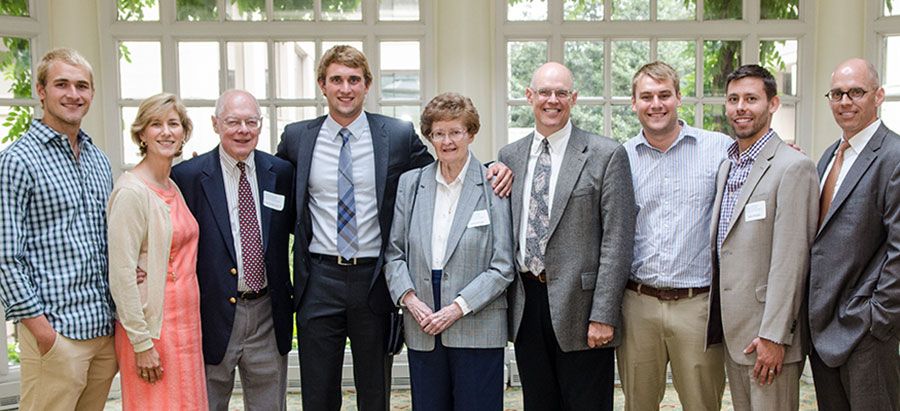
Hours before the annual GW School of Medicine and Health Sciences (SMHS) M.D. Program White Coat ceremony began, a group of SMHS M.D. alumni joined with an exclusive collection of incoming students for a very special ceremony. For the alumni on hand, the gathering was more than just an opportunity to remember their years in medical school and reflect upon the impact SMHS has played in their lives; for the new students it was more than just a chance to consider how pivotal the school promises to become over the next several years. The gathering, GW’s Fourth Annual SMHS Medical Legacy Brunch, marked a union between their personal and professional families.
Jeffrey S. Akman, M.D. ’81, RESD ’85, Walter A. Bloedorn Professor of Administrative Medicine, vice president for health affairs, and dean of SMHS, himself an SMHS legacy — Akman’s his cousin Leonard Akman, was an M.D. Class of 1943 alumnus — welcomed each family to the brunch, encouraging each family to reflect upon formative experiences at GW.
Thirteen members of this year’s incoming class of M.D. students hail from legacy families — those whose parents, grandparents, sibilings, or other family members began their medical careers at GW — bringing to more than 30 the total of students with a family connection to SMHS. A common theme among this attending this year’s event centered on what the growing number of legacy families says, not only about the quality of the education, but also about a school that maintains an emphasis on the things that matter most in medicine; people.
“My memory of GW has always been of a medical school with a heart,” said Steven Gelda, M.D. ’81, who along with his wife Jennifer was on hand to celebrate as their daughter Jennifer recited the honor code becoming a GW medical student. “There was always an emphasis on having a caring approach to the practice of medicine.”
Like many of those present for the brunch, Gelda shared similar experiences. From surviving Gross Anatomy, to adjustment to the curriculum workload, to the connection to national events the school’s proximity to government provided. “When you are in Washington, D.C. you are living in the midst of history as it happens.” When Gelda first arrived at Foggy Bottom, it was only a few years after the Watergate scandal and the months-long trial had concluded. By his fourth year, he had a front-row seat to the aftermath of the assassination attempt on President Ronald Reagan.
For incoming student Luke Domaleski and his father Robert, it wasn’t GW’s proximity to the seat of power that drew him to Foggy Bottom, it was GW’s track program, the GW Healing Clinic, and the school’s emphasis on clinical skills. The elder Domaleski, M.D. ’77, jokingly confessed that throughout his son’s search for potential schools he had trouble maintaining an unbiased perspective about his alma mater. “GW has always been at the forefront of medical education, I really think the school offers one of the top medical educations in the country. I was blown away by the new CLASS Center. As medical student, Luke is going to gain the depth of knowledge of clinical skills and procedures that it took my generation of physicians years to learn.”


